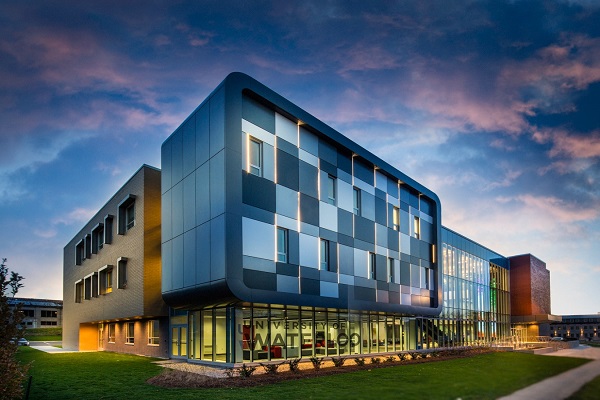University of Waterloo: Mathematical beauty at the limits of the possible
Researching in mathematics means engaging in unconventional thinking. For Patrick Naylor, a newly-minted PhD graduate from the Department of Pure Mathematics, the unconventional is the everyday.
Naylor works in the field of low-dimensional topology, which in a nutshell means he explores the characteristics of dimensions beyond those we experience as reality.
Naylor is this year’s winner of the coveted Governor General’s Gold Medal for the University of Waterloo at the doctoral level. The Governor General’s Gold Medal is among the highest honours in academia, awarded annually to one doctoral student and one master’s student with the highest standing.
Naylor’s recent dissertation on low-dimensional topology was received with much acclaim, winning him first place in the Faculty of Mathematics Doctoral Prize.
Oddly enough, even though mathematicians have shown there to be perhaps as many as twelve dimensions in the knowable universe, the higher dimensions – those over the fifth dimension – are somewhat more straightforward to understand.
“Various mathematicians took up the study of high-dimensional manifolds and drove the field forward through exciting discoveries,” Naylor says. “But lower dimensions, which includes the fourth and the fifth dimensions, proved especially tricky to understand.”
Dimensionality has been a challenge for mathematicians for quite some time, and the unexpected revelations and peculiarities of different dimensions has long fascinated Naylor.
In fact, what he says he likes most about low-dimensional topology is that it is filled with paradoxes that push our understanding of what is possible to the limits.
“I also love how visual the field can be,” Naylor continues. “Coming up with ways to visually represent 4D objects can help communicate the wonder of math to students and to the broader public. In my new position as a postdoctoral researcher, I have access to a 3D printer and I’m looking forward to using it to find new ways of communicating mathematics.”
The focus on outreach and teaching goes hand-in-hand with doing research in math, as far as Naylor is concerned. During his PhD studies at Waterloo, he was actively involved with the Centre for Education in Mathematics and Computing and found enormous fulfillment in working with junior high and high school students.
“Teaching math is actually very helpful for research as well,” Naylor says. “Working with students and helping them understand abstract concepts pushes me to refine my own ideas. I’ve learned that math is a team sport and not a solitary pursuit.”
That same orientation to teamwork and collegiality is, for Naylor, what defines the Department of Pure Mathematics. From day one, he found that the faculty members, staff and other students in the department created a context in which he could flourish.
“I don’t know how to even express my gratitude to everyone,” he says. “My supervisor, Doug Park, has been in my corner the entire time. Nancy Maloney in the pure math graduate office made everything on the admin side super-easy. And all my colleagues and friends at Waterloo and beyond. People like Maggie Miller, Zack Cramer, David Gay, Hannah Schwartz, and so many more. Then, of course, my family, who were always cheering me on. I couldn’t have done it without support from so many people.”
As for what Naylor plans to do next, he has recently taken up a two-year postdoctoral position at Princeton, where he set out to continue his work in low-dimensional topology. After that, as he has learned in his research, “anything is possible.”

